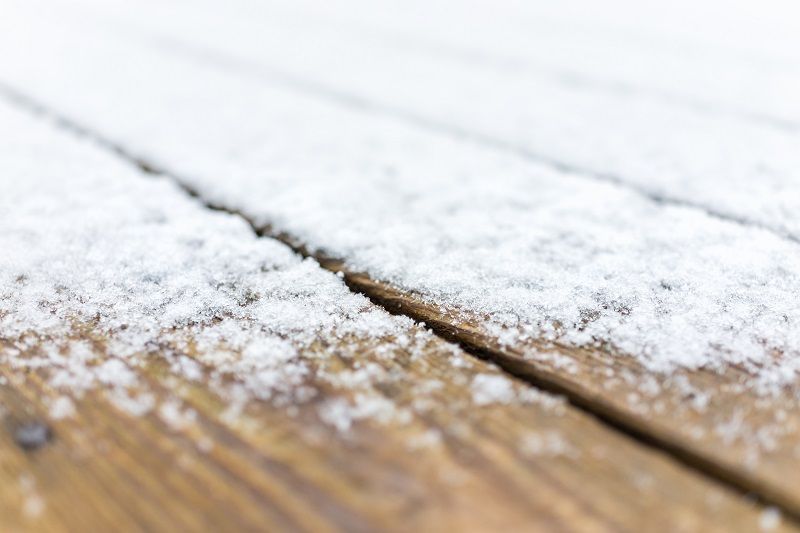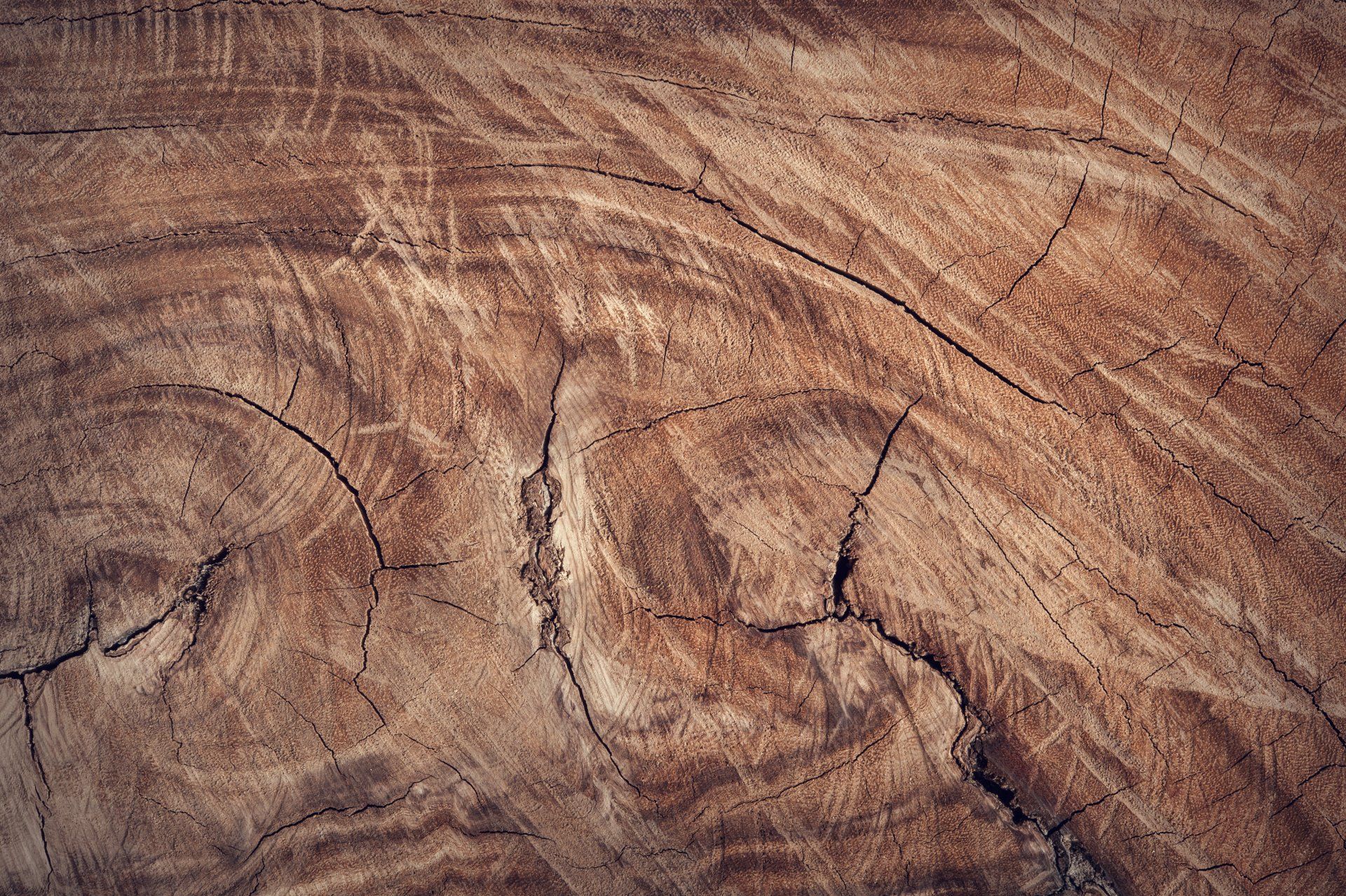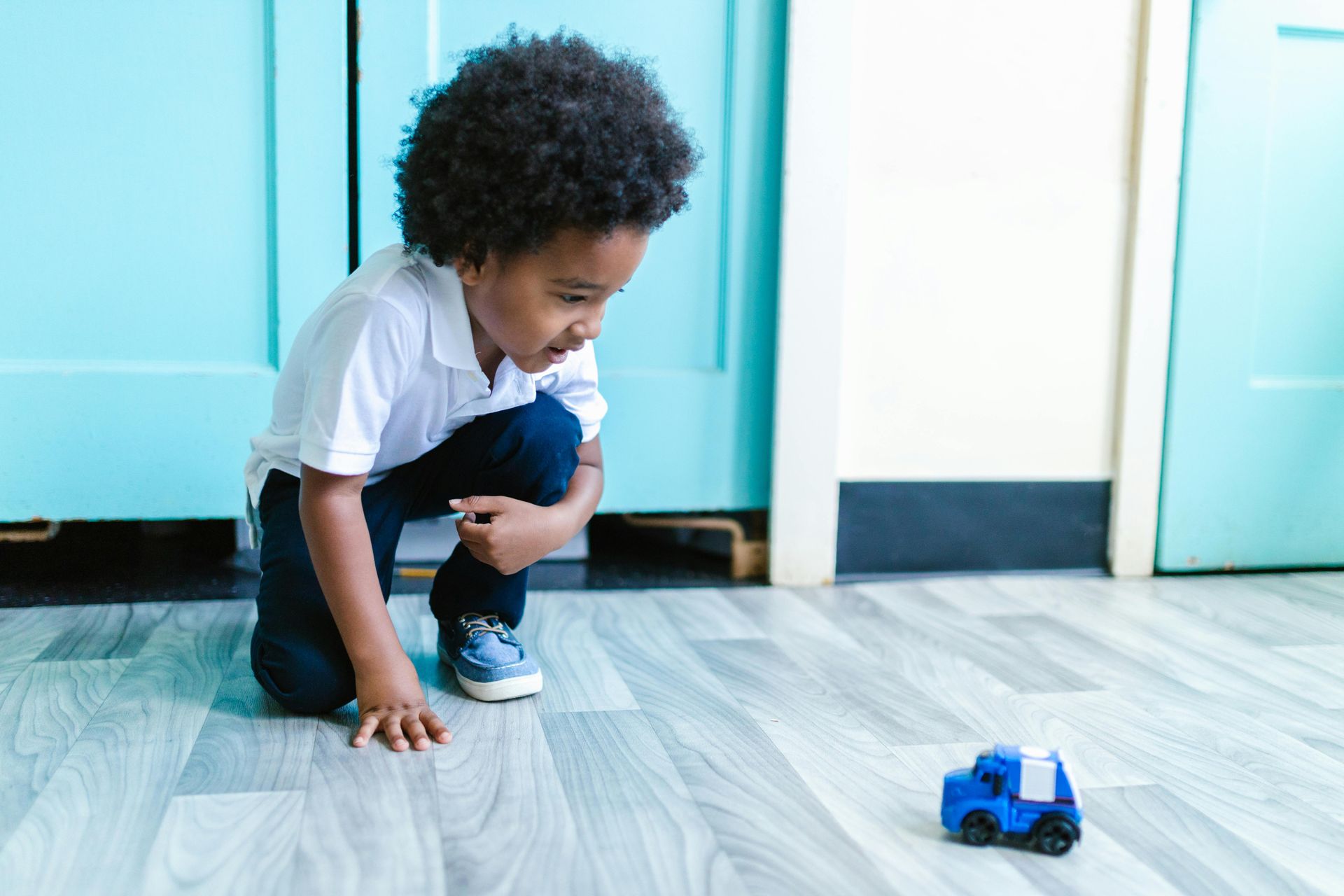Resaons to Replace Flooring
Reasons to Replace Flooring
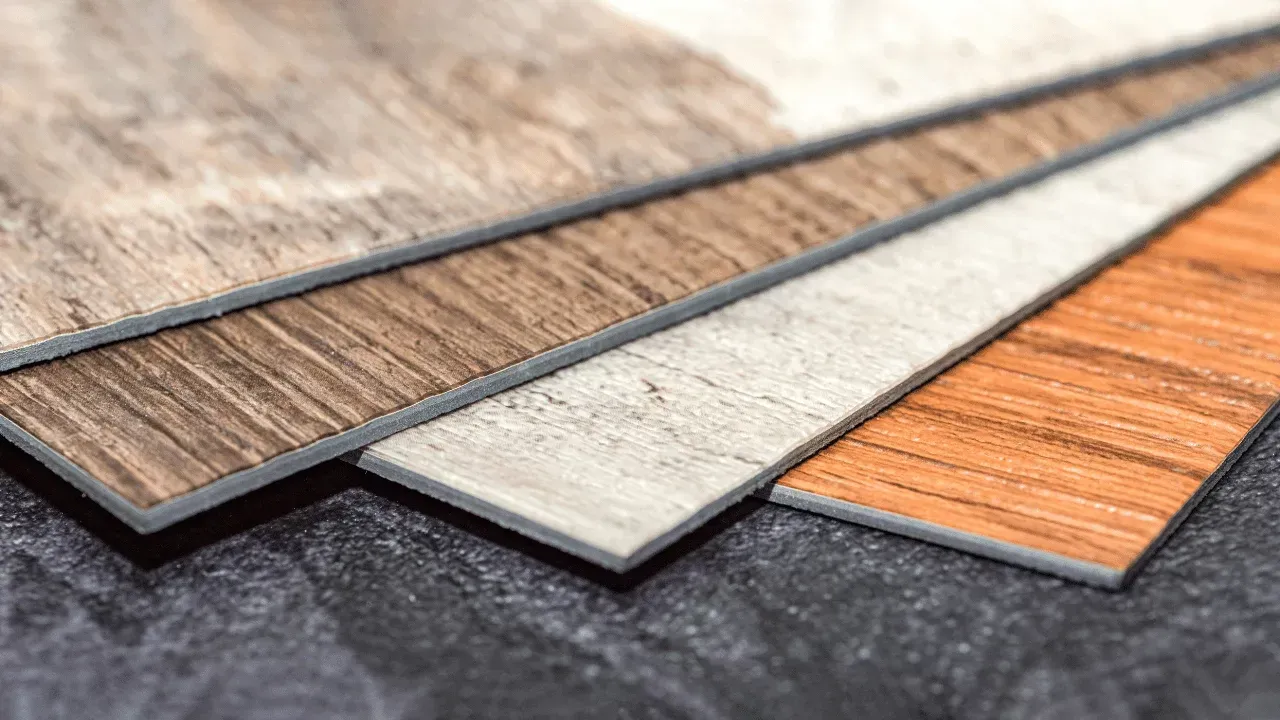
1. Wear and Tear: • Over time, flooring can become worn or damaged. Hardwood floors, in particular, can suffer from scratches or dents due to heavy foot traffic or moving furniture. Significant wear not only affects the appearance but also the safety of the flooring.
2. Structural Issues: • If the floor becomes uneven or begins to lift, there may be structural issues. Uneven floors can lead to discomfort when walking and, over time, could result in cracks or more severe deformation, which could be a safety hazard.
3. Moisture and Water Damage: • Floors exposed to moisture or water can warp or develop mold, especially wood or carpet. Water damage can also impact indoor air quality, making immediate replacement essential to prevent further issues.
4. Allergy Concerns: • Old carpets or flooring can accumulate dust, allergens, and dust mites. These can trigger allergic reactions, so replacing the flooring may be beneficial, especially if someone in the household suffers from allergies.
5. Aesthetic Improvement: • Changes in interior design often necessitate replacing flooring. Installing new, stylish flooring can refresh the look of a home, and modern options can increase property value.
6. Energy Efficiency: • Older flooring may not provide sufficient insulation, leading to difficulty maintaining indoor temperature. Newer flooring options often offer better insulation, helping reduce heating costs and maintain more consistent indoor temperatures.
7. Noise Reduction: • Hard floors like wood or tile can generate significant noise, especially when walking. This can be particularly bothersome for multi-story homes where footsteps may disturb those below.
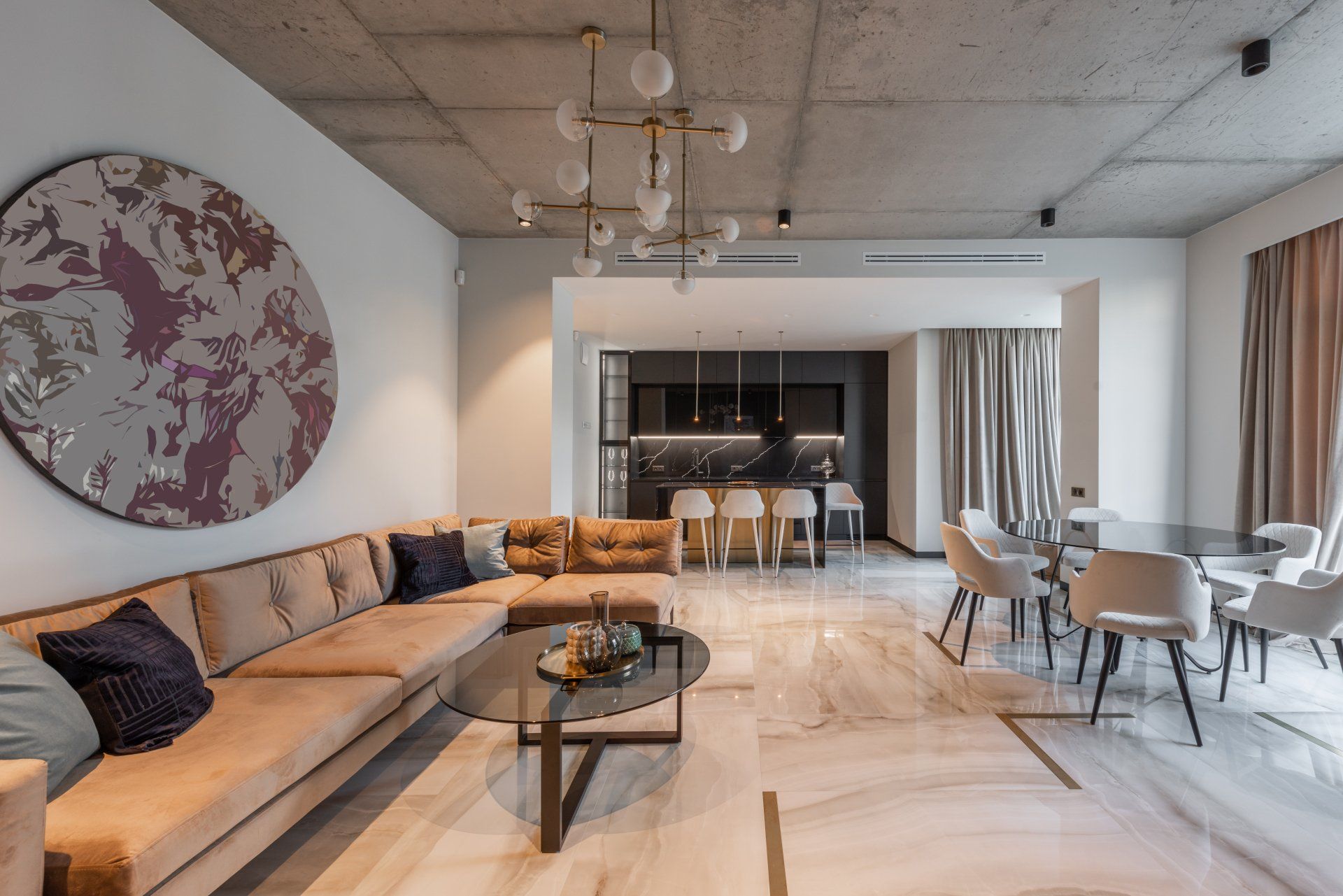
Follow us on Instagram
-
#floorpreps #subflooring #dricore #insulatedfloor #flooring #floorinstallation #basementfloor #vinylplank #vinylflooring #cannotwait #feelsgood #carpenterlifeButton
-
A fast turnaround for a downtown restaurant. A nice looking vinyl tile. It’s perfect for commercial or public areas #vinylflooring #flooring #fastturnaround #vinyltile #vinylplanks Manufactured by @pureluxcanada Installed by @edenfloors #flooringspecialistButton
-
Check out our hardwood flooring installation projects. Contact us to our professional installer for your project. #flooring#flooringinstallation#hardwood#hardwoodinstallation#hardwoodstoreinGTA#flooringstore#latestproject#hardwoodflooring#woodworking#flooringrepair#flooringleveling#finishcarpentryButton
-
A beautiful engineered hardwoods manufactured by @fuzionflooring , installed by @edenfloors , and satisfied customers 😎 #hardwoodfloors #flooringinstallation #flooringcarpenter #edenfloors #floorsales #flooringstore #flooringexperts #toronto #vaughan #ontario #canada #customflooring #stairdesign #stairideas #waterfallstairsButton
-
Very excited that we finally opened our showroom! Visit us at 50 viceroy Rd. Unit#16 or Call us at 647-524-2122. We're always pleased to assist you! #Flooring #Floor #Flooringstore #Flooringstoreinvaughan #Flooringinstallation #hardwood #Vinlyplank #Laminate #Tile #CarpetButton
-
We’re a team of professional flooring and finish carpenters based in Toronto. Visit our showroom and woodworking shop at 50 Viceroy Rd. Unit #16, Concord. #vinylflooring #flooringcarpenter #edenfloors #professionalflooringservices #vinylplanks #finishcarpentry #commercialflooring #officeflooring #looselay #customwoodworking #customflooringButton
-
50 Viceroy Rd. Unit #16Button
-
Ready to go #customstairnosings #vinylplanks #vinylstairs #vinylplankflooring #flushstairnosings #customflooring #floorcarpenter #flooringexpert #hardwoodflooring #vinylflooring #laminateflooring #finishcarpenty #customwoodworking #torontoButton
-
#vinylfloor #luxuryvinylflooring #LVP #vinyltiles #flooring #vinylstaircase #floorinstallation #commercialflooring #finishcarpentry #canadaButton
-
#homeimprovements #reno #flooring #engineeredhardwood #hardwoodflooring #trimcarpentry #finishcarpentry #floorinstallation #canada #farmhouseButton
-
#farmhouse #hardwoodfloors #shiplapwalls #reno #homeimprovement #homedecoration #interiordesign #finishcarpentry #carpenterlife #floorinstallation #canadaButton
-
A beautiful house in Uxbridge. Can’t wait to see the result. #measureoncecutonce #engineeredhardwoodflooring #flooringcarpenter #finishcarpentry #houserenovation #reno #flooringinstallation #canada🇨🇦Button
-
😔 After 4 months only. #carpenterlife #flooringcarpenter #finishcarpenter #flooring #finishcarpentry #toronto #canada #safetyshoes @keen It was very comfortable and nice looking shoes. Wish it’s more durable.Button
-
#laminatefloorproblems #laminatesucks #condofloorssuck #hatelaminate #lovevinylplanks #9mmvinylplanks #condoapprovedfloors @pureluxcanada #flooring #flooringcarpenter #vinylflooring #finishcarpentry #toronto #canada #carpenter #reno #homeimprovement #flippingButton
-
#floorleveling #flooring #vinylflooring #vinylfloors #LVP #basementfloor #finishcarpentry #carpenter #reno #toronto #canadaButton
-
#customflooring #finishcarpentry #flooringcarpentry #hardwoodflooring #vinylflooring #laminateflooring #toronto #gta #canada #durhamregion #professionalflooringservices #reno #interiordesign #customersatisdaction #happycustomerButton
-
We pay attention to all the details for both of customers and our satisfaction. We use our skills and knowledge fully to make things work out at every circumstances. #flooringcarpenter #flooring #finishcarpentry #hardwoodfloors #vinylfloors #laminatefloors #trims #customflooring #customcarpentry #toronto #GTA #canadaButton
-
#flooring #customflooring #floorinstallation #satisfyingcustomers #customersatisfaction #flooringreview #professional #hardwoodflooring #vinylflooring #laminateflooring #reno #toronto #gta #durhamregion #canada #flooringcarpentry #finishcarpentry #trimsButton
-
#flooring #customflooring #floorinstallation #satisfyingcustomers #customersatisfaction #flooringreview #professional #hardwoodflooring #vinylflooring #laminateflooring #reno #toronto #gta #durhamregion #canada #flooringcarpentry #finishcarpentry #trimsButton
-
#flooring #customflooring #floorinstallation #satisfyingcustomers #customersatisfaction #flooringreview #professional #hardwoodflooring #vinylflooring #laminateflooring #reno #toronto #gta #durhamregion #canada #flooringcarpentry #finishcarpentry #trimsButton
-
#flooring #customflooring #floorinstallation #satisfyingcustomers #customersatisfaction #flooringreview #professional #hardwoodflooring #vinylflooring #laminateflooring #reno #toronto #gta #durhamregion #canada #flooringcarpentry #finishcarpentry #trimsButton
-
#flooring #customflooring #floorinstallation #satisfyingcustomers #customersatisfaction #flooringreview #professional #hardwoodflooring #vinylflooring #laminateflooring #reno #toronto #gta #durhamregion #canada #flooringcarpentry #finishcarpentry #trimsButton
-
#flooring #customflooring #floorinstallation #satisfyingcustomers #customersatisfaction #flooringreview #professional #hardwoodflooring #vinylflooring #laminateflooring #reno #toronto #gta #durhamregion #canada #flooringcarpentry #finishcarpentry #trimsButton
-
I love this vinyl plank. It’s got very secure locking system that you actually hear clicking sound when the planks are locking each other. I’d say it’s the most cost effective one out there. Definitely recommend 👍🏼#purelux #vinylflooring #feelsogood #floorcarpentry #basementflooring #finishcarpentry #floorcarpenter #flooring #trims #baseboards #shoemoldings #toronto #canadaButton
-
#hardwoodflooring #hardwoodfloors #engineeredhardwood #hardwoodinstallation #engineeredflooring #toronto #canada #flooringcarpenterButton
-
#flooring #vinylplanks #vinylfloors #basementflooring #renk #baseboards #baseboardinstallation #finishcarpentry #toronto #canada #edenfloorsButton
-
#vinylflooring #vinylfloor #vinylplankstairs #flooring #floorinstalltion #floorcarpentry #vinylplanks #canada #toronto #floortrendsButton
-
#hardwoodflooring #floorrepair #oldhouse #flooringinstallation #flooringexperts #flooringcarpenter #toronto #ontario #canadaButton
-
#hardwoodrepair #hardwoodflooring #flooringcarpenter #finishcarpentryButton
-
Thank you #safetyshoes You did enough so I’m letting you go. #congrats on your #retirement #goodbye 😘Button
-
#customcloset #carpentry #woodworking #carpenterlife #custommillwork #milworksButton
-
#customcloset #carpentrywork #carpentryskills #carpentry #woodworking #carpenter #carpenterlife #coping #copingskills #copeButton
-
#flooring #finishcarpentry #laminatefloors #waterprooflaminate #vinylflooring #vinylplanks #vinylplankflooring #lvp #lvt #hardwood #engineeredhardwood #solidhardwood #clickengineeredhardwood #carpet #toronto #gtaButton
-
#flooring #finishcarpentry #laminatefloors #waterprooflaminate #vinylflooring #vinylplanks #vinylplankflooring #lvp #lvt #hardwood #engineeredhardwood #solidhardwood #clickengineeredhardwood #carpet #toronto #gtaButton
-
#flooring #finishcarpentry #laminatefloors #waterprooflaminate #vinylflooring #vinylplanks #vinylplankflooring #lvp #lvt #hardwood #engineeredhardwood #solidhardwood #clickengineeredhardwood #carpet #toronto #gtaButton
-
#flooring #finishcarpentry #laminatefloors #waterprooflaminate #vinylflooring #vinylplanks #vinylplankflooring #lvp #lvt #hardwood #engineeredhardwood #solidhardwood #clickengineeredhardwood #carpet #toronto #gtaButton
-
#flooring #finishcarpentry #laminatefloors #waterprooflaminate #vinylflooring #vinylplanks #vinylplankflooring #lvp #lvt #hardwood #engineeredhardwood #solidhardwood #clickengineeredhardwood #carpet #toronto #gtaButton
-
#flooring #finishcarpentry #laminatefloors #waterprooflaminate #vinylflooring #vinylplanks #vinylplankflooring #lvp #lvt #hardwood #engineeredhardwood #solidhardwood #clickengineeredhardwood #carpet #toronto #gtaButton
-
Even the storage, we take a good care 😎 #perfectfinish #vinylflooring #clickvinylflooring #vinylplankflooring #vinylplank #spc #wpc #waterproofflooring #flooring #finishcarpentry #carpentry #reno #torontolifeButton
-
#transition #reducer #vinylflooring #clickvinylflooring #vinylplankflooring #vinylplank #spc #wpc #waterproofflooring #beaulieucanada #beaulieuflooring #flooring #carpentry #reno #torontolifeButton
-
#vinylflooring #clickvinylflooring #vinylplankflooring #vinylplank #spc #waterproofflooring #7mm #flooring #carpentry #reno #torontolifeButton
-
#vinylflooring #clickvinylflooring #vinylplankflooring #vinylplank #spc #waterproofflooring #5.5mm #flooring #carpentry #reno #torontolifeButton
-
#vinylflooring #clickvinylflooring #vinylplankflooring #vinylplank #spc #waterproofflooring #7mm #flooring #painting #spraypainting #carpentry #reno #torontolifeButton
-
#laminateflooring #waterprooflaminateflooring #waterproofflooring #fuzionflooring #flooring #laminatefloors #reno #painting #carpentry #torontolife #toronto #andersonfloorsButton
-
Our new location in Woodbridge 👍🏾 We have 30+ brands and 1,000+ samples at the showroom 🤩 #hardwoodfloors #vinlyplankflooring #laminatefloors #carpet #carpettiles #vinyltiles #flooring #toronto #canada @andersonfloorsButton
-
#floors #engineeredhardwood #flooring #vinylplankflooring #vinylplankfloors #luxuryvinylplank #laminateflooring #laminatefloors #hardwoodfloors #engineeredhardwood #hardwoodflooring #trimwork #baseboard #shoemoulding #casing #stairs #finishcarpentry #reno #basement #kitchen #carpentry #carpenterlife #carpenter #homereno #homeimprovement #interiordesign #toronto #canada 👍🏾😊Button
-
#floors #engineeredhardwood #flooring #vinylplankflooring #vinylplankfloors #luxuryvinylplank #laminateflooring #laminatefloors #hardwoodfloors #engineeredhardwood #hardwoodflooring #trimwork #baseboard #shoemoulding #casing #stairs #finishcarpentry #reno #basement #kitchen #carpentry #carpenterlife #carpenter #homereno #homeimprovement # #interiordesign #toronto #canada 👍🏾😊Button
-
#floors #engineeredhardwood #flooring #vinylplankflooring #vinylplankfloors #luxuryvinylplank #laminateflooring #laminatefloors #hardwoodfloors #engineeredhardwood #hardwoodflooring #trimwork #doors #baseboard #shoemoulding #casing #stairs #finishcarpentry #reno #basement #kitchen #carpentry #carpenterlife #carpenter #homereno #homeimprovement # #interiordesign #toronto #canada 👍🏾😊Button
-
#floors #engineeredhardwood #flooring #vinylplankflooring #vinylplankfloors #luxuryvinylplank #laminateflooring #laminatefloors #hardwoodfloors #engineeredhardwood #hardwoodflooring #trimwork #baseboard #shoemoulding #casing #stairs #finishcarpentry #reno #basement #kitchen #carpentry #carpenterlife #carpenter #homereno #homeimprovement # #interiordesign #toronto #canada 👍🏾😊Button
-
Our new location is getting ready to open!! #thanks @titancontractorsprayers @benjaminmoore #titan440 #benjaminmoore #painting #interior #reno #renovation #flooring #carpentry #finishcarpentry #finishcarpenterlife #bestflooringstore @andersonfloors #toronto #gta #canada #new #floor #engineeredhardwood #flooring #vinylplankflooring #vinylplankfloors #luxuryvinylplank #laminateflooring #laminatefloors #hardwoodfloors #engineeredhardwood #hardwoodflooring #trimwork #stairs #basement #kitchen #homeimprovementButton
-
#mitre #trimworks #trimcarpentry #trimming #finishcarpentry #carpentry #casing #jamb #newdoors #woodworking #homereno #reno #homeimprovement #newkitchen #newfloors #flooring #vinylplankflooring #vinylplankfloors #luxuryvinylplank #laminateflooring #laminatefloors #hardwoodfloors #hardwoodflooring #interiordesign #project #toronto #canadaButton
-
#newdoors #trimwork #trimcarpentry #trimming #finishcarpentry #carpentry #casing #jamb #woodworking #homereno #reno #homeimprovement #newkitchen #newfloors #flooring #vinylplankflooring #vinylplankfloors #luxuryvinylplank #laminateflooring #laminatefloors #hardwoodfloors #hardwoodflooring #interiordesign #project #toronto #canadaButton
-
#new #windowcasing #niceday #sunny #trimwork #trimcarpentry #trimming #finishcarpentry #carpentry #casing #jamb #woodworking #homereno #reno #homeimprovement #newkitchen #newfloors #flooring #vinylplankflooring #vinylplankfloors #luxuryvinylplank #laminateflooring #laminatefloors #hardwoodfloors #hardwoodflooring #interiordesign #project #toronto #canadaButton
-
#niceday #sunny #trimwork #trimcarpentry #trimming #finishcarpentry #carpentry #casing #jamb #woodworking #homereno #reno #homeimprovement #newkitchen #kitchencabinets #newfloors #flooring #vinylplankflooring #vinylplankfloors #luxuryvinylplank #laminateflooring #laminatefloors #hardwoodfloors #hardwoodflooring #interiordesign #project #toronto #canadaButton
-
#new #floor #engineeredhardwood #flooring #vinylplankflooring #vinylplankfloors #luxuryvinylplank #laminateflooring #laminatefloors #hardwoodfloors #engineeredhardwood #hardwoodflooring #trimwork #baseboard #shoemoulding #casing #stairs #finishcarpentry #reno #basement #kitchen #carpentry #carpenterlife #carpenter #homereno #homeimprovement # #interiordesign #toronto #canada #myfavoriteproject 👍🏾😊Button
-
#engineeredhardwood #engineeredhardwood #8mm #flooring #vinylplankflooring #vinylplankfloors #luxuryvinylplank #laminateflooring #laminatefloors #hardwoodfloors #engineeredhardwood #hardwoodflooring #trimwork #baseboard #shoemoulding #casing #stairs #finishcarpentry #reno #basement #kitchen #carpentry #carpenterlife #carpenter #homereno #homeimprovement # #interiordesign #toronto #canada #myfavoriteproject #myfavoritefloors #nicehomeowners 👍🏾😊Button
-
#trimwork #trimcarpentry #trimming #finishcarpentry #carpentry #casing #jam #woodworking #homereno #reno #homeimprovement #newkitchen #kitchencabinets #newfloors #flooring #vinylplankflooring #vinylplankfloors #luxuryvinylplank #laminateflooring #laminatefloors #hardwoodfloors #hardwoodflooring #painting #interior #wall #interiordesign #project #toronto #canada #nicehomeownersButton
-
#nohashtagButton
-
#Basement #flooring #vinylplankflooring #vinylplankfloors #luxuryvinylplank #laminateflooring #laminatefloors #hardwoodfloors #engineeredhardwood #hardwoodflooring #trimwork #baseboard #shoemoulding #casing #stairs #finishcarpentry #reno #basement #kitchen #carpentry #homereno #homeimprovement # #interiordesign #toronto #canada #myfavoriteproject #myfavoritefloors @coretecfloors #nicehomeowners 👍🏾😊Button
-
#Basement #flooring #vinylplankflooring #vinylplankfloors #luxuryvinylplank #laminateflooring #laminatefloors #hardwoodfloors #engineeredhardwood #hardwoodflooring #trimwork #baseboard #shoemoulding #casing #stairs #finishcarpentry #reno #basement #kitchen #carpentry #homereno #homeimprovement # #interiordesign #toronto #canada #myfavoriteproject #myfavoritefloors @coretecfloors #nicehomeowners 👍🏾😊Button
-
#beforeandafter The #Basement #flooring #vinylplankflooring #vinylplankfloors #luxuryvinylplank #laminateflooring #laminatefloors #hardwoodfloors #engineeredhardwood #hardwoodflooring #trimwork #baseboard #shoemoulding #casing #stairs #finishcarpentry #reno #painting #basement #kitchen #carpentry #homereno #homeimprovement # #interiordesign #toronto #canada #myfavoriteproject #myfavoritefloors @coretecfloors #nicehomeowners 👍🏾😊Button
-
#Basement #flooring #vinylplankflooring #vinylplankfloors #luxuryvinylplank #laminateflooring #laminatefloors #hardwoodfloors #engineeredhardwood #hardwoodflooring #trimwork #baseboard #shoemoulding #casing #stairs #finishcarpentry #reno #basement #kitchen #carpentry #homereno #homeimprovement #interiordesign #toronto #canada #myfavoriteproject #myfavoritefloors @coretecfloors #nicehomeowners 👍🏾😊Button
-
#painting #penthouse #interior #walls #painterlife #homeimprovement #reno #interiordesign #toronto #canadaButton
-
#painting #interior #walls #painterlife #homeimprovement #reno #interiordesign #toronto #canadaButton
-
#painting #interior #walls #trims #benjaminmoorepaint @benjaminmoore #shoreline #painterlife #homeimprovement #reno #interiordesign #toronto #canadaButton
-
#flooring #vinylplankflooring #vinylplankfloors #luxuryvinylplank #laminateflooring #laminatefloors #hardwoodfloors #engineeredhardwood #hardwoodflooring #trimwork #baseboard #shoemoulding #casing #stairs #finishcarpentry #reno #basement #kitchen #carpentry #homereno #homeimprovement # #interiordesign #toronto #canada #myfavoriteproject #myfavoritefloors #beaulieucanada @beaulieu.canada 👍🏾😊Button
-
#quick #repair #flooring #vinylplankflooring #vinylplankfloors #luxuryvinylplank #laminateflooring #laminatefloors #hardwoodfloors #engineeredhardwood #hardwoodflooring #trimwork #baseboard #shoemoulding #casing #stairs #finishcarpentry #reno #basement #kitchen #carpentry #homereno #homeimprovement # #interiordesign #toronto #canadaButton
-
The Baby’s Room #painting #walls #ceiling #stairs #benjaminmoorepaint #natura @benjaminmoore #interior #painterlife #homeimprovement #reno #interiordesign #toronto #canadaButton
-
The Master & Guest Room #painting #walls #ceiling #stairs #masterbedroom #guestroom #benjaminmoorepaint #natura @benjaminmoore #interior #painterlife #homeimprovement #reno #interiordesign #toronto #canadaButton
-
The Living Room #painting #walls #ceiling #stairs #benjaminmoorepaint #natura @benjaminmoore #interior #painterlife #homeimprovement #reno #interiordesign #toronto #canadaButton
-
#flooring #vinylplankflooring #vinylplankfloors #luxuryvinylplank #laminateflooring #laminatefloors #hardwoodfloors #engineeredhardwood #hardwoodflooring #trimwork #baseboard #shoemoulding #casing #stairs #finishcarpentry #reno #basement #kitchen #carpentry #homereno #homeimprovement # #interiordesign #toronto #canada #myfavoriteproject #myfavoritefloors #nicehomeowners 👍🏾😊Button
-
The #Bathroom #flooring #vinyltile #vinylplankflooring #vinylplankfloors #luxuryvinylplank #laminateflooring #laminatefloors #hardwoodfloors #engineeredhardwood #hardwoodflooring #trimwork #baseboard #shoemoulding #casing #stairs #finishcarpentry #reno #basement #kitchen #carpentry #homereno #homeimprovement # #interiordesign #toronto #canada #myfavoriteproject #myfavoritefloors #nicehomeowners 👍🏾😊Button
-
The #Stairs #flooring #vinylplankflooring #vinylplankfloors #luxuryvinylplank #laminateflooring #laminatefloors #hardwoodfloors #engineeredhardwood #hardwoodflooring #trimwork #baseboard #shoemoulding #casing #stairs #finishcarpentry #reno #basement #kitchen #carpentry #homereno #homeimprovement # #interiordesign #toronto #canada #myfavoriteproject #myfavoritefloors #nicehomeowners 👍🏾😊Button
-
The #Kitchen #flooring #vinylplankflooring #vinylplankfloors #luxuryvinylplank #laminateflooring #laminatefloors #hardwoodfloors #engineeredhardwood #hardwoodflooring #trimwork #baseboard #shoemoulding #casing #stairs #finishcarpentry #reno #basement #kitchen #carpentry #homereno #homeimprovement # #interiordesign #toronto #canada #myfavoriteproject #myfavoritefloors #nicehomeowners 👍🏾😊Button
-
The #Basement #flooring #vinylplankflooring #vinylplankfloors #luxuryvinylplank #laminateflooring #laminatefloors #hardwoodfloors #engineeredhardwood #hardwoodflooring #trimwork #baseboard #shoemoulding #casing #stairs #finishcarpentry #reno #basement #kitchen #carpentry #homereno #homeimprovement # #interiordesign #toronto #canada #myfavoriteproject #myfavoritefloors #nicehomeowners 👍🏾😊Button
-
Many thanks for your kindness and all the gifts! It was my pleasure to work for your project! 💪🏾 #thanks #flooring #vinylplankflooring #vinylplankfloors #luxuryvinylplank #laminateflooring #laminatefloors #hardwoodfloors #hardwoodflooring #trimwork #finishcarpentry #carpentry #homereno #homeimprovement #reno #interiordesign #toronto #canada #myfavoriteproject #nicehomeownersButton
-
#flooring #vinylplankflooring #vinylplankfloors #luxuryvinylplank #laminateflooring #laminatefloors #hardwoodfloors #hardwoodflooring #trimwork #finishcarpentry #carpentry #homereno #homeimprovement #reno #interiordesign #toronto #canada #myfavoriteproject #myfavoritelaminatefloors #madeingermany #nicehomeowners 👍🏾😊Button
-
#flooring #vinylplankflooring #vinylplankfloors #luxuryvinylplank #laminateflooring #laminatefloors #hardwoodfloors #hardwoodflooring #trimwork #finishcarpentry #carpentry #homereno #homeimprovement #reno #interiordesign #toronto #canada #thankyou @andersonfloors 👍🏾Button
-
#trimwork #trimcarpentry #trimming #finishcarpentry #carpentry #casing #jam #woodworking #homereno #reno #homeimprovement #newkitchen #kitchencabinets #newfloors #flooring #vinylplankflooring #vinylplankfloors #luxuryvinylplank #laminateflooring #laminatefloors #hardwoodfloors #hardwoodflooring #interiordesign #project #toronto #canada #nicehomeownersButton
-
#flooring #vinylplankflooring #vinylplankfloors #luxuryvinylplank #laminateflooring #laminatefloors #hardwoodfloors #hardwoodflooring #trimwork #finishcarpentry #carpentry #homereno #homeimprovement #reno #interiordesign #toronto #canada #nicehomeowners 👍🏾😊 @beaulieu.canadaButton
-
#merrychristmas #flooring #vinylplankflooring #vinylplankfloors #luxuryvinylplank #laminateflooring #laminatefloors #hardwoodfloors #hardwoodflooring #trimwork #finishcarpentry #carpentry #homereno #homeimprovement #reno #interiordesign #toronto #canada #nicehomeowners 👍🏾😊Button
-
#flooring #gluedownfloor #vinylplankflooring #laminateflooring #hardwoodfloors #finishcarpentry #carpentry #carpenter #toronto #canadaButton
-
I was making some cork boards today. I still got more cuts to make the 5 big boards. It’ll look nice🤞🏾#corkboard #carpentry #finishcarpentry #woodworking #dewalt #dewalttools #toronto #canadaButton
-
The Stairs. #portperry #canada #flooring #vinylplankflooring #vinylplankfloors #luxuryvinylplank #laminateflooring #laminatefloors #hardwoodfloors #hardwoodflooring #trimwork #finishcarpentry #carpentry #homereno #homeimprovement #reno #interiordesign #toronto #canada #nicehomeowners 👍🏾😊Button
-
The Hallway. #portperry #flooring #vinylplankflooring #vinylplankfloors #luxuryvinylplank #laminateflooring #laminatefloors #hardwoodfloors #hardwoodflooring #trimwork #finishcarpentry #carpentry #homereno #homeimprovement #reno #interiordesign #toronto #canada #nicehomeowners 👍🏾😊Button
-
The Livingroom. #portperry #flooring #vinylplankflooring #vinylplankfloors #luxuryvinylplank #laminateflooring #laminatefloors #hardwoodfloors #hardwoodflooring #trimwork #finishcarpentry #carpentry #homereno #homeimprovement #reno #interiordesign #toronto #canada #nicehomeowners 👍🏾😊Button
-
The Bathroom #3. #portperry #flooring #vinylplankflooring #vinylplankfloors #luxuryvinylplank #laminateflooring #laminatefloors #hardwoodfloors #hardwoodflooring #trimwork #finishcarpentry #carpentry #homereno #homeimprovement #reno #interiordesign #toronto #canada #nicehomeowners 👍🏾😊Button
-
The Bathroom #2. #portperry #flooring #vinylplankflooring #vinylplankfloors #luxuryvinylplank #laminateflooring #laminatefloors #hardwoodfloors #hardwoodflooring #trimwork #finishcarpentry #carpentry #homereno #homeimprovement #reno #interiordesign #toronto #canada #nicehomeowners 👍🏾😊Button
-
The Bathroom #1. #portperry #flooring #vinylplankflooring #vinylplankfloors #luxuryvinylplank #laminateflooring #laminatefloors #hardwoodfloors #hardwoodflooring #trimwork #finishcarpentry #carpentry #homereno #homeimprovement #reno #interiordesign #toronto #canada #nicehomeowners 👍🏾😊Button
-
#flooring #gluedownfloor #vinylplankflooring #vinylplankfloors #luxuryvinylplank #laminateflooring #laminatefloors #hardwoodfloors #hardwoodflooring #trimwork #finishcarpentry #carpentry #homereno #homeimprovement #reno #interiordesign #toronto #canada #nicehomeowners 👍🏾😊Button
-
#flooring #vinylplankflooring #vinylplankfloors #luxuryvinylplank #laminateflooring #laminatefloors #hardwoodfloors #hardwoodflooring #trimwork #finishcarpentry #carpentry #homereno #homeimprovement #reno #interiordesign #toronto #canada #nicehomeowners 👍🏾😊Button
-
#today It was a special day. I went to the #timhortons drive-through this morning for a coffee same as usual. I ordered a coffee and was gonna pay at my turn but they avoided tapping my card and said, “it’s free”, so I’m like “what??” and they said, “she already paid for it”. 😇 There was a lady before me and she paid for my coffee! She doesn’t know me and didn’t even know what I’ve ordered! She just wanted to pay whatever for me and made my day very thankful! Unfortunately I didn’t have a chance to catch her on the road. (I really wanted ask her why and say thank you) Thank you the lady I don’t know your name🙏🏾 #nice #kind #canadian #neighbours #toronto #canada #finishcarpentry #carpenterlifeButton
-
#painting #interior #housepainting #homeimprovement #reno #finishcarpentry #painterlife #london #toronto #canadaButton
-
#flooring #madeingermany @shawfloors #laminateflooring #hardwoodflooring #vinylplankflooring #homeimprovement #reno #finishcarpentry #toronto #canadaButton
-
My truck was on fire? #pickup #truck #f150 #ford #fire #omg #finishcarpentry #painting #flooring #homeimprovement #reno #interiordesign #toronto #canadaButton
-
Let’s get it 😎 One of the most expensive paint and the greatest paint I’ve ever used 👍🏾#benjaminmoorepaint #natura @benjaminmoore #painting #interior #painterlife #homeimprovement #reno #interiordesign #toronto #canadaButton
-
The Floors. #flooring #vinylplank #vinylplankflooring #laminateflooring #hardwoodflooring #renovation #homeimprovement #finishcarpentry #carpenter #toronto #canadaButton
-
The Living Area. From popcorn ceiling removal to painting. #sherwinwilliamspaint #opulence #snowbound @sherwinwilliams #painting #renovation #homeimprovement #painterlife #toronto #canadaButton
-
The Rooms. I used #sherwinwilliamspaint #opulence #alpaca @sherwinwilliams #painting #homeimprovement #renovation #painterlife #toronto #canadaButton
-
The Bathrooms. I liked the colour #opaline from #sherwinwilliamspaint @sherwinwilliams #painting #interior #homeimprovement #renovation #painter #painterlifeButton
Register a PRO acocunt
Enjoy the additional discounts and services!
Contact Us
We will get back to you as soon as possible.
Please try again later.
EDEN FLOORS, 50 VICEROY RD, UNIT 16, CONCORD, ON, L4K 3A7, CANADA
647.524.2122 INFO@EDENFLOORS.CA
About Us
Store Policy
Contact
Shop By Brand
Flooring
Hardwood
Laminate
Vinyl Plank
Carpet
EDEN FLOORS

